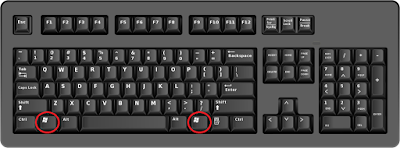Deleting .access Files Ransomware In Simple Steps
.access Files Ransomware causes following error 0x00000038, 0x0000001C, 0x000000F9, 0x80244004 WU_E_PT_SOAPCLIENT_CONNECT Same as SOAPCLIENT_CONNECT_ERROR - SOAP client failed to connect to the server., Error 0x80070070 – 0x50011, 0x80240023 WU_E_EULAS_DECLINED The license terms for all updates were declined., 0x80247001 WU_E_OL_INVALID_SCANFILE An operation could not be completed because the scan package was invalid., 0x000000CB, 0x8024E007 WU_E_EE_CLUSTER_ERROR An expression evaluator operation could not be completed because the cluster state of the computer could not be determined., 0x0000002C, 0x80244017 WU_E_PT_HTTP_STATUS_DENIED Same as HTTP status 401 - the requested resource requires user authentication., 0x000000C5, 0x0000001E, 0x00000071, 0x8024D012 WU_E_SELFUPDATE_REQUIRED_ADMIN Windows Update Agent must be updated before search can continue. An administrator is required to perform the operation., 0x0000009BDelete .access Files Ransomware From PC In Few Simple Clicks
.access Files Ransomware is another type of PC virus which is a malicious program gets installed automatically on your PC without asking your permission. It inserts its harmful code into the registry entry and changes it for its automatic execution. It infects the data stored on PC including pictures, music, videos, files and documents. There are various methods by which it can enter your PC like drive-by download or free downloads, spam emails, clicking on malicious ads or pop-ups, visiting suspicious ads, etcetera.
When .access Files Ransomware enters your PC, it starts to create havoc inside the PC. It at first disturbs the functioning of the PC by altering its internal settings. This perilous virus may change the desktop icons and creates new icons. Also, it allows hackers to remotely access the PC. Hence, it is not good at all to allow this malware to remain inside the PC for longer time.
Method 1 : Deletion of .access Files Ransomware From Internet Explorer
Method 2 : Simple Steps To Open PC In Safe Mode
Method 3 : Deletion of .access Files Ransomware From Control Panel
Method 4 : Delete .access Files Ransomware From Task Manager
Method 5 : Deletion of .access Files Ransomware From Registry Entry
Easy And Complete Deletion Of .access Files Ransomware From PC
Method 1 : Deletion of .access Files Ransomware From Internet Explorer
Delete .access Files Ransomware From Google Chrome
- At first, you need to open your Google Chrome browser.
- To open Chrome menu, click on gear icon present at the top right corner of browser.
- Click on Tools then goto Extension tab.
- Under Extension tab, select all unwanted extension related to .access Files Ransomware.
- Finally, click on trash bin icon to Delete this virus from Google Chrome.

Delete .access Files Ransomware From Internet Explorer
- Click on gear icon present at the right-top corner of the browser or press Alt+T keys to open menu.
- Click on Manage Add-ons and goto Toolbars and Extensions tab..
- Locate all the unwanted add-ons related to .access Files Ransomware.
- Click on Disable button.
- Now, click More information button.
- Finally, click on Delete button to Delete the virus.

Delete .access Files Ransomware From Mozilla Firefox
- Open Mozilla browser and click on the menu button at the top right corner of the browser.
- Click Add-ons -> Add-ons Manager tab.
- Select Extensions or Appearance panel.
- Find .access Files Ransomware add-ons you want to Delete.
- Click the Delete button then restart your PC.

Delete .access Files Ransomware From Microsoft Edge
- Click on More (...) icon at the top right corner then click on Settings option.

- Now, in the Open with option, click on A specific page or pages option.
- Choose Custom and type the URL which you want to set as your browsers default homepage.

Method 2 : Simple Steps To Open PC In Safe Mode
For Win XP/Vista/7 -
- Click on Start menu and then click Restart option.

- Press F8 while PC boots-up.
- Under Advanced Boot option, select Safe Mode.

For Win 8/10 -
- Press Shift key while clicking on Restart button on the Shutdown menu.
- No, select Troubleshoot - > Advanced options.

- Click on Startup Setting.

- Click Restart button.

- Press F5 key for the option Safe Mode With Networking.

Method 3 : Deletion of .access Files Ransomware From Control Panel
Delete .access Files Ransomware From Windows XP -
- Click Start button and goto and click on Control Panel.

- Click Add or Remove Programs option.

- In the window that appears, locate and Delete .access Files Ransomware related programs.

Delete .access Files Ransomware From Windows 7 -
- Press Window key present on the keyboard.

- Click Control Panel option.
- Click on Programs option from the Control Panel window.
- Select the .access Files Ransomware executable file from the list of installed programs.
- Click on Delete option.

Delete .access Files Ransomware From Windows 8 -
- Open run box by pressing Window+R keys together.

- Type control panel in the run box and hit Enter key.

- Click on Delete a Program option.

- Select programs related to .access Files Ransomware and click Delete option.
Delete .access Files Ransomware From Windows 10 -
- Click on Start button and select Settings option from the Start menu.
- Select System option under Settings.

- Click on App & Features option.

- Finally, Delete all the unwanted programs from your PC.

Method 4 : Delete .access Files Ransomware From Task Manager
- Right click on Taskbar.
- In the menu, choose Task Manager.

- From the various running process, select the unwanted process.
- Click End Task.

Method 5 : Deletion of .access Files Ransomware From Registry Entry
- Press Windows+R keys to open Run box.
- In the run box, type regedit and click on OK.

- Locate and remove all the registry files related to .access Files Ransomware.
HKEY_CURRENT_USERSoftwareMicrosoftInternet ExplorerMain Default_Page_URL
HKEY_LOCAL_Machine\Software\Classes.access Files Ransomware
HKEY_CURRENT_USER\Software\Microsoft\Windows\CurrentVersion\Run .exe
HKCU\Software\Microsoft\Windows\CurrentVersion\Internet Settings\random
HKEY_LOCAL_MACHINE\SOFTWARE\Microsoft\Windows\CurrentVersion\run\random

No comments:
Post a Comment